The Manaslu Circuit hike passes ten Himalayan peaks of more than 21,300 feet, including the 8000er, Manaslu (26,781 feet), which is the eighth-highest mountain on Earth.
The Manaslu trek is a 110-mile hike that is a great alternative to Everest Base Camp hike or the Annapurna Circuit hike. The trek usually takes between 14 and 17 days. There are some who do it in 12 days.
Here is my hikers guide to the Manaslu Circuit trek.
Manaslu Trek Guide
The Manaslu Circuit trek resembles the Annapurna Circuit trek of decades past. The area covers six climatic zones. Robin Boustead, author of Nepal Trekking & the Great Himalaya Trail: A Route & Planning Guide, has said, “many would argue that the Manaslu Circuit trail is the best trek in Nepal.”
The Manaslu Circuit hike runs through a restricted area and, while growing ever more popular, is nowhere near as developed as the Khumbu (i.e. Everest) and Annapurna regions. The scenery is similar to that of the Annapurna region and the level of difficulty is similar to the Annapurna Circuit.
A good portion of the trek is spent above 10,000 feet, which is more demanding, but the acclimatisation profile is good, with the trek starting at just under 2,000 feet and taking a week to reach 10,000 feet.
Around 2,000 people undertake this trek each year, much less than hikes in the Annapurna region or to Everest Base Camp, with over half coming in October. You will probably see more yaks and donkeys than trekkers.
The first reason why the Manaslu trek is less frequented is that camping used to be the only option due to a lack of Nepal tea houses. This has since changed with many tea houses being built over the last decade. Admittedly, what tea houses now exist are basic compared to those found on the Annapurna Circuit, but most are relatively comfortable and have electricity. A warm 4-season sleeping bag should be taken as the bedding in some tea houses isn't great and rooms get very cold at night.
The second reason for the Manaslu Circuit hike’s lesser popularity is that the area is restricted and so requires a permit and a registered guide.
Please Note: The highest point is Larkya La (5,213m), which is widely regarded as one of the most dramatic pass crossings in the Himalayas. Sitting as it does in the near-permanent shadow of Manaslu’s north face, snow conditions can be severe. It takes five or six hours to trek to the top.
Manaslu Regional Map
The Manaslu Circuit trek is in western Nepal, a few miles from Tibet inn the North and north-west of Kathmandu in Nepal.
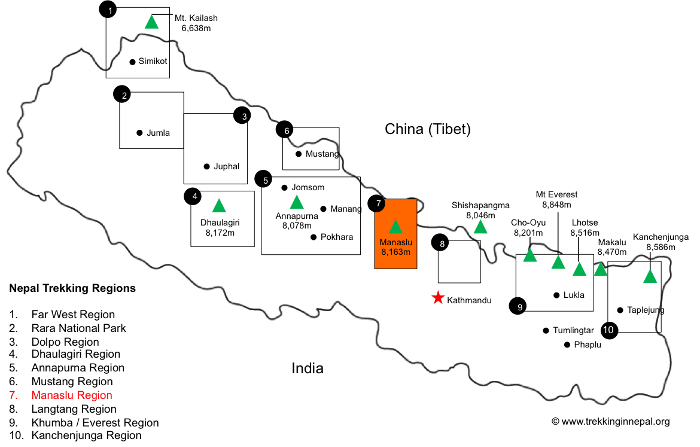
Recommended Manaslu Map
In terms of a good map for the Manaslu Circuit, we recommend: Manaslu and Ganesh Himals Region: 1:125,000 Trekking Map (The Great Himalaya Trail Series Maps) (NP106).
In terms of a single detailed map we recommend the Himalayan MapHouse’s, New Annapurna Trekking Trails Map, which can be bought in Kathmandu, Pokhara or on Amazon.
We have also provided links and recommendations to guidebooks below.
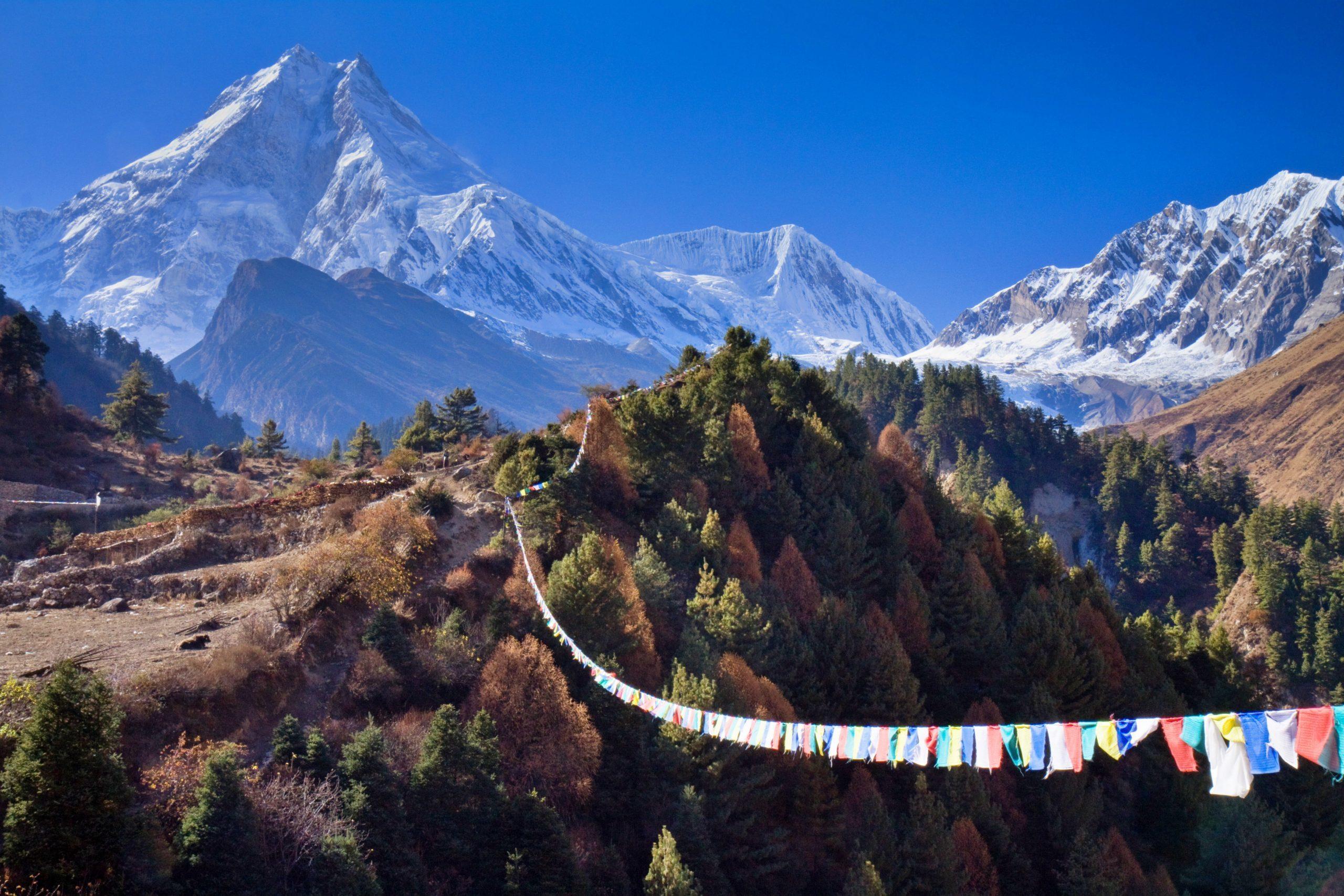
Manaslu Trek Itinerary
Because of the spacing of tea houses at higher altitudes, the Manaslu trek is best done anti-clockwise. It is possible to stay in nothing but tea houses, but you may want to camp as well.
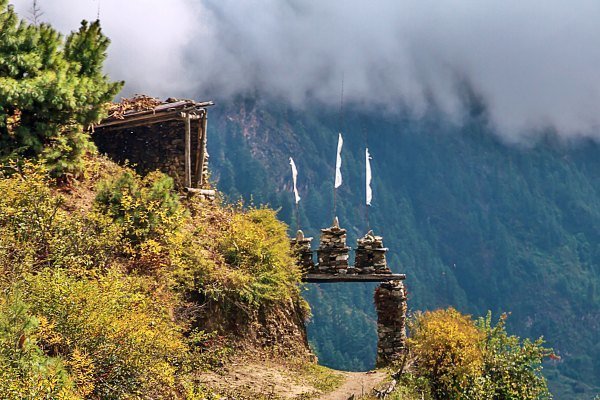
There are several Manaslu Circuit itineraries that can be done. Most start in Arughat, which can be reached by bus from Kathmandu (be prepared for a bumpy ride). Much of the trek follows the Buri Gandaki.
On the lower reaches you will pass lots of farmland, but as you ascend the landscape will become a lot more barren and glaciated.
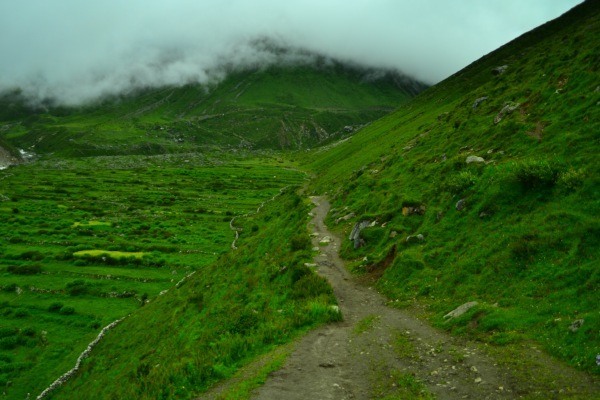
There are many mountain views, the most impressive I think are those of Naike Peak, Manaslu North and Manaslu.
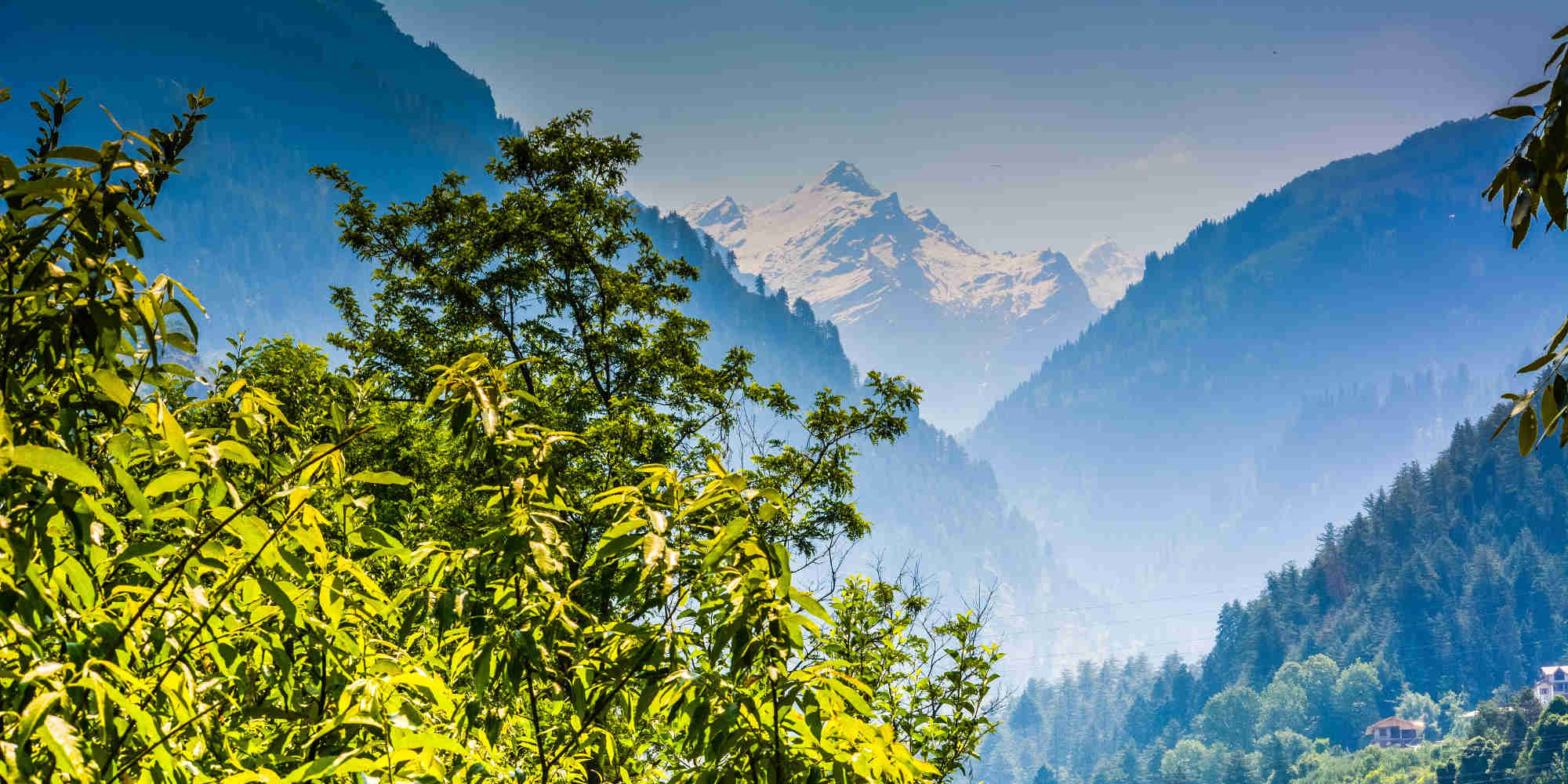
Manaslu Circuit Trek FAQ
When is the best time to trek Manaslu?
The best time to trek Manaslu is October or November. Overall, this is the overall best time to trek in Nepal with April and May being the next best times.
How much does the Manaslu Circuit trek cost?
Prices can vary widely, from $2,000 per person at the bottom end to $4,000 per person at the top end. There are over 1000 local trekking agencies in Nepal, so make sure you pick a good, well reviewed operator.
Are permits required for the Manaslu Circuit trek?
Yes, permits are required for the Manaslu Circuit Trek. You need a Restricted Area Permit which costs $50 a week, a Manaslu Conservation Area Project permit which costs $30 and an Annapurna Conservation Area Project permit which costs $30. You will also need four passport-sized photographs.
How difficult is the Manaslu trek?
The Manaslu Circuit Trek is considered quite challenging, but still a possibility for first time trekkers. Altitude is often over 10,000 feet and there may be sections with snow. A good level of fitness is required as the trek is quite long and often steep.
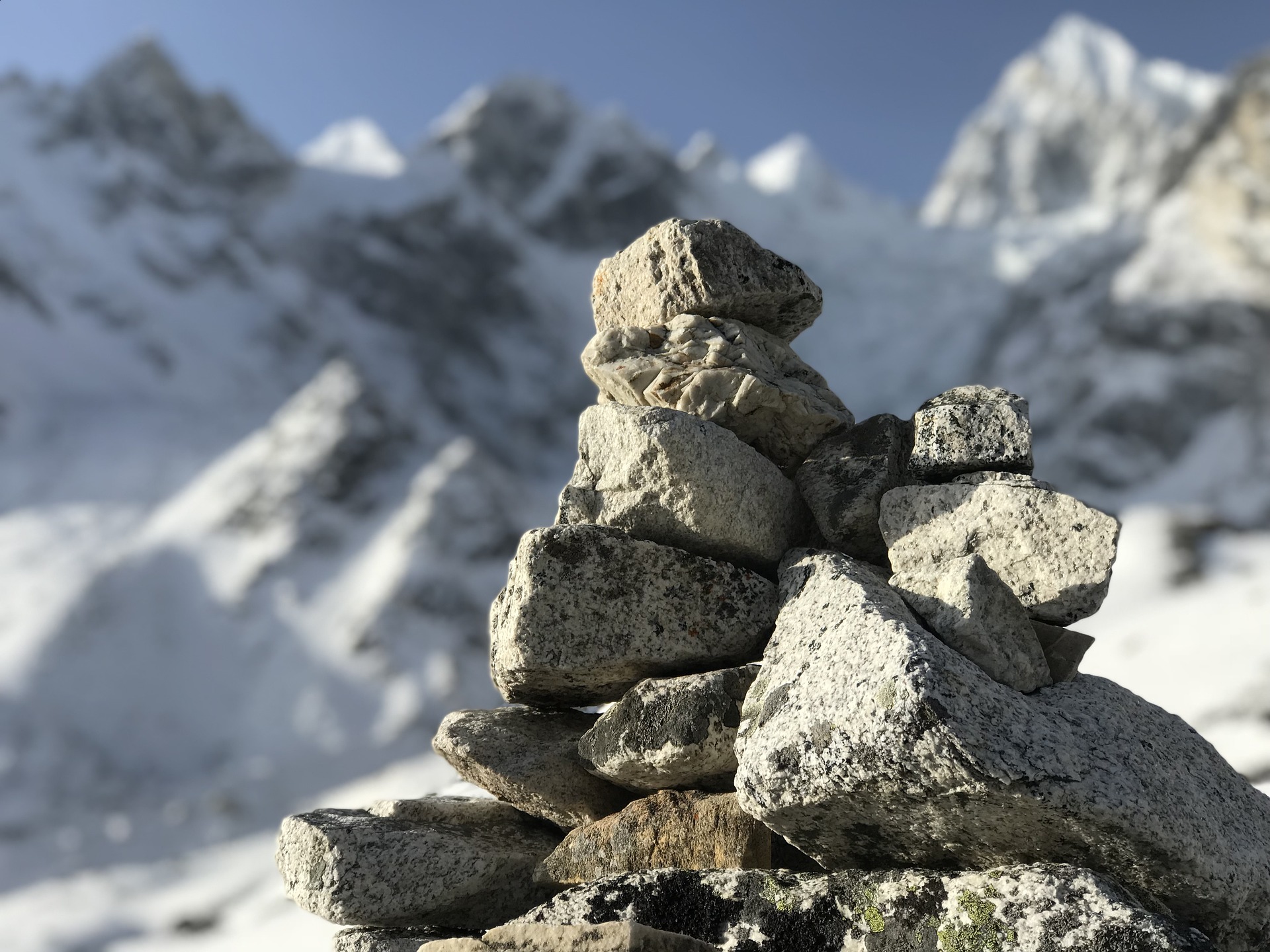
Is altitude sickness a risk on the Manaslu Circuit trek?
Yes, altitude sickness is a risk on the Manaslu Circuit trek because it ascends to some high-altitude points. At its highest point, Larkya La, you will reach an altitude of 5,213 meters (17,100 feet). There are steep sections on this trek where you will ascend very rapidly.
Therefore, it is important to have a solid understanding of the risks associated with high altitude trekking and how the body acclimatises to high altitude. We recommend you read our detailed article on altitude sickness.
What gear do I need for the Manaslu Circuit?
Trekking the Manaslu Circuit requires a number of essential pieces of trekking gear. The trail is long and moderately difficult, exposing you to a range of altitudes where temperatures fluctuate dramatically between night and day.
At a minimum you should take:
- 4-season sleeping bag
- Good hiking boots and 6-8 pairs of hiking socks
- Layered clothing including base layers and a warm down jacket
- Warm gloves
- 60-70L backpack
- Hydration pack
- Trekking poles and polarised glasses

Are there any recommended guidebooks for the Manaslu Circuit Trek?
There are two guidebooks dedicated to the Manaslu Circuit hike that I recommend.
The first one and my personal favourite is A Trekking Guide to Manaslu and Tsum Valley: Lower Manaslu & Ganesh Himal by Sian Pritchard-Jones and Bob Gibbons. As a great alternative, I recommend No products found. by Lonely Planet.
There is also a collector's book available online called Manaslu: A Trekker’s Guide by Kev Reynolds, which was published in 1999.
You are also welcome to have a look at our recommended list of Nepal books and guidebooks for more options.
Continue browsing
See more information on Nepal. Or check out these other Nepal hiking articles:

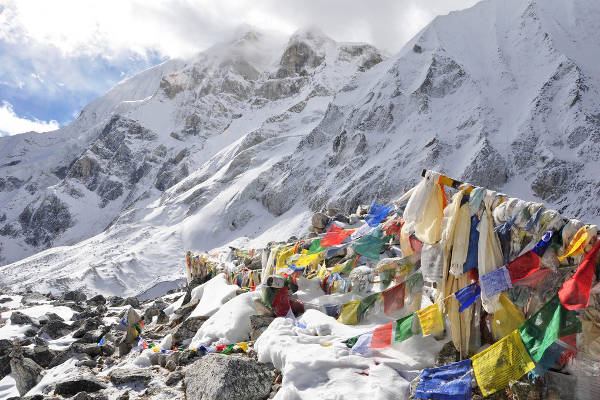
Hi. Do you have any insurers you prefer?
Thanks
I recommend Rise & Shield: https://riseandshield.com/
Hello,
I am planning on traveling to Nepal this mid May to early June with two friends.
I am a Wilderness First Responder and have guided backpacking trips in California and Alaska, so I consider myself quite competent in the backcountry and would be more than happy to carry my own gear for the duration of a trek.
Is there a particular region in Nepal (or Bhutan or India) that lends itself to off-trail travel without a trekking company? I am still open to hiring a local guide because I think it adds a lot to the experience, but I would prefer to be in a region that provides a competent backpacker with more flexibility.
I’d appreciate any input or direction!
Thanks!
Hi David, in terms of Nepal I would recommend the Annapurna Circuit, Goyko Lakes Trek or the Manaslu Circuit – all offer great backcountry hiking, but are sufficiently well trodden with decent facilities (tea houses) to make one’s experience fun and enjoyable.
Thanks so much for the input Mark.
On the three treks that you mentioned, should we prepare to stay on the common trail the whole trip, or is it feasible/desirable to ever travel off-trail to explore a little more?
Last question, I promise. Thanks!